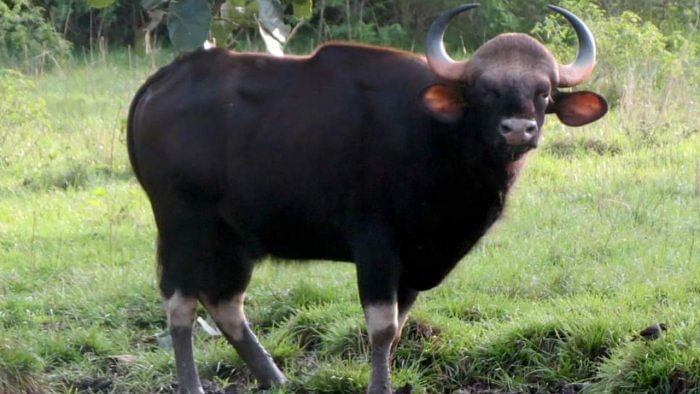
The poaching of wild animals for bushmeat and medicine continues unabated in Karnataka, with the state losing at least two Indian gaurs (bisons), two leopards and a tiger in the last three months.
While these are the reported cases, sources in the forest department say that unreported hunting incidents could be much higher.
Herbivores such as chital, barking deer and wild boar are hunted for bushmeat. Star turtles and pangolins are poached for their medicinal qualities while tigers and leopards are hunted for their pelts, bones, claws and teeth. The poaching of elephants for their ivory has come down drastically after the killing of forest brigand Veerappan.
According to documents provided by the forest department, the state reported 1,956 wildlife offences between 2018-19 and 2021-22. The department defines wildlife offences as the killing, poaching, maiming, poisoning, or torturing of an animal. There are over 3,520 pending cases of wildlife offences in Karnataka.
Activists cite poor intelligence, unscientific methods of gathering evidence and easily available country-made weapons as the reasons behind the unabated poaching of animals and poor conviction rate.
“Karnataka has a vast and porous forest area. It also has ‘honey-comb’ human settlements making it difficult for the department to prevent such incidents,” said Canara Circle Chief Conservator of Forests Vasanth Reddy. He categorically denied the role of an organised crime syndicate.
Sources in Haliyal division, where two leopards and a tiger were poached, ruled out the involvement of an organised syndicate as the poachers left behind the pelt and bones of the carnivore, which have higher market value than teeth and claws. “Moreover, one of the leopards was shot dead using a country-made gun. Professional poachers would ensure that the pelt of the animal is not damaged,” he said.
Several officials said that the disposal of carcasses of small herbivores and jungle fowl is easier, which is why poaching of these animals goes unreported.
Vasanth Reddy said the shortage of foot soldiers is hurting the department’s efforts in preventing animal hunting.
Giridhar Kulkarni, wildlife conservationist, demanded the establishment of dedicated wildlife crime cells in each division. “As the conviction rate is too less in wildlife cases, it is important to set up fast-track courts for speedy trials and employ scientific methods and technology in gathering evidence. More importantly, sufficient funds should be allocated for core protection works rather than development works,” he said.
Wildlife Conservation Foundation’s Rajkumar D Urs said police and forest department officials, instead of limiting themselves to arresting poachers, should act against the end users and address the root cause.